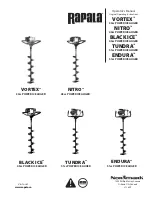
WIND ca. 30 km/h
landing area
landing area
2
1
3
4
landing
area
WIND
P
APILL
ON P
AR
A
GLID
ER
S
|
HIM
AL
A
Y
A
|
O
W
N
ER´S M
ANU
AL
9
| 20
LANDING
The landing should always be upwind (against
the wind). At a safe altitude the wind direction
and strength are judged and the landing
pattern and approach are planned.
The normal landing pattern begins at the po-
sition (1), where any remaining excess altitude
is decreased, in case of a left pattern by flying
left circles. The downwind, base and final legs
(2-4) follow. Final approach is into the wind.
Throughout the entire pattern the paraglider
is flown with a slight brake pull for maximum
canopy stability. The landing spot serves as a
reference point and is constantly observed.
Never make aggressive maneuvers while
approaching for landing.
On the approach legs you have good correc-
tion possibilities (dashed red lines).
Straighten up in the harness at least 5 meters
above ground. In about one meter above
ground pull the brakes fully to perform a land-
ing stall in order to reduce the rate of descent
and airspeed. The touchdown is simplified and
standing landings are easily possible.
Don’t pull the brakes too early. Especially in
the final approach it would be dangerous if
a stall occurs in 3, 4 or 5 meters already. The
best landings are those with a nice flare.
The final approach is carried out in trim
speed, if possible. In thermal conditions a final
approach with maximum canopy stability (10-
20% brake pull) is recommended.
ATTENTION:
Remember that landing
requires your highest concentration again.
So, plan your landing in such a way that you
are safely on the ground before your men-
tal and physical performance diminishes.
TOP LANDINGS
Landings at the launch site require wind or
thermals. Therefore, they are recommended
only for experienced pilots with lots of ground
handling experience.
ATTENTION:
During a strong wind take off
attempt, ground handling and landing the
leading edge can hit the ground with high
speed. This is to be avoided because oth
-
erwise the ribs, the sewing or the fabric
can be damaged!
STRONG WIND LANDINGS
In strong winds you fly several base legs
before the landing point with semicircles into
the wind (called “eight setups”). Begin a short
final approach into the wind in about 10 to
20 meters above ground using slight brake
pressure.
Do not turn with the wind as airspeed and
wind speed add up. A landing at a high ground
speed could be dangerous.
After touchdown turn around quickly and bring
the canopy down by using the C-risers in order
to avoid being dragged across the ground.
Summary of Contents for HIMALAYA
Page 1: ...HIMALAYA OWNER S MANUAL ...






































